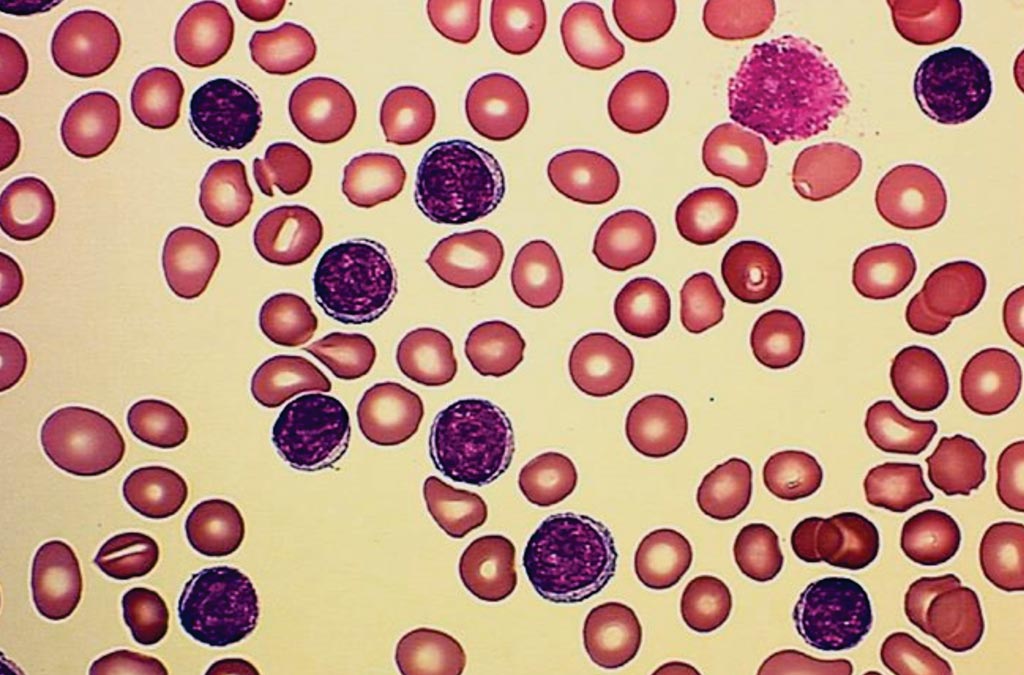Immune System Genes Linked to Chronic Lymphocytic Leukemia
By LabMedica International staff writers
Posted on 24 Feb 2017
Chronic lymphocytic leukemia (CLL) is an indolent B-cell malignancy that has a strong genetic component, as evidenced by the eightfold increased risk seen in relatives of CLL patients.Posted on 24 Feb 2017
The risk of developing chronic lymphocytic leukemia (CLL) has been linked to the inheritance of nine regions of DNA, five of which help white blood cells fight disease.

Image: Chronic lymphocytic leukemia. The peripheral blood smear shows an absolute lymphocytosis of small “mature” lymphocytes with clumped, smudgy chromatin and scant cytoplasm. Smudge cells (near the top right) are a common finding (Photo courtesy of Cleveland Clinic).
An international team, co-led by scientists at The Institute of Cancer Research perform a meta-analysis of six genome-wide association studies, imputed using a merged reference panel of 1,000 Genomes and UK10K data, totaling 6,200 cases and 17,598 controls after replication. They analyzed genome-wide association data from populations of European ancestry from Europe, North America and Australia, identifying nine new risk loci.
The fidelity of imputation as assessed by the concordance between imputed and directly genotyped single nucleotide polymorphisms (SNPs) was examined in a subset of samples. Replication genotyping of UK samples was performed using competitive allele-specific polymerase chain reaction (PCR KASPar) chemistry. Replication genotyping of Mayo samples was performed using Sequenom MassARRAY.
The team found that one of the new variants resides in the gene B-cell scaffold protein with ankyrin repeats 1 (BANK1), only ever activated in a type of white blood cell called B cells, and linked to the autoimmune disease lupus. Another was found in the gene Zinc finger and BTB domain-containing protein 7A (ZBTB7A), which regulates B cells numbers, so errors in this gene could lead to too many B cells in the bloodstream and bone marrow. A third was found in a region of chromosome 22, which has been linked with the risk of developing multiple sclerosis.
Richard Houlston, MD, PhD, a Professor of Molecular and Population Genetics and co-leader of the study, said, “We knew people were more likely to develop chronic lymphocytic leukemia if someone in their family had suffered from the disease, but our new study takes a big step towards explaining the underlying genetics. CLL is essentially a disease of the immune system, and it's fascinating that so many of the new genetic variants we have uncovered seem to directly affect the behavior of white blood cells and their ability to fight disease.” The study was published on February 6, 2017, in the journal Nature Communications.














